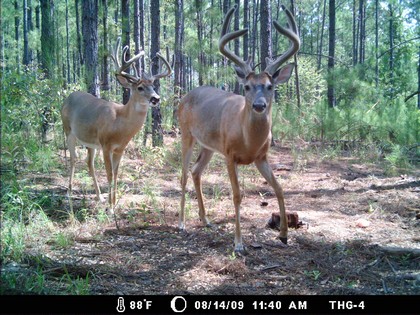Wildlife management, especially towards white-tailed deer, is becoming increasingly important to private landowners. One of the biggest management issues landowners face is calculating reliable deer population estimates using traditional survey methods. One technique that has become recently popular is using game cameras to survey deer and estimate population sizes. Because of its ease of use and cost efficiency, remote photography seems to be increasing in its popularity as a tool for landowners and wildlife biologists, but does this remote survey technique work?
Game camera surveys have been used to estimate population parameters among a variety of wildlife species, including white-tailed deer. These parameters include buck to doe ratio, fawn recruitment estimates, and age-related information. However, this deer survey technique involves placing bait in front of the camera in order to capture animals more frequently, which could introduce biases in parameter estimates. From September 2008 to March 2009, researchers at Auburn University monitored cameras placed at random, along game trails, and at feed stations to determine if sex and age structure could be accurately assessed in a population of white-tailed deer.

Since cameras placed at random should have provided the least biased estimates of population structure, researchers compared estimates from feed stations and trail-based cameras to those from random sites to determine if they accurately assess population structure. The results results indicated that there was no single time period in which both sex ratio and recruitment estimates could be determined accurately from cameras placed at feed stations.
Trail-based camera surveys provided deer population estimates very similar to those from random sites, and may provide a feasible alternative to using baited camera stations for estimating whitetail population parameters. Results indicate that game camera surveys could be combined with other deer survey methods to create a more precise hybrid estimate of the population. More precise estimates are needed for proper deer management and habitat management.